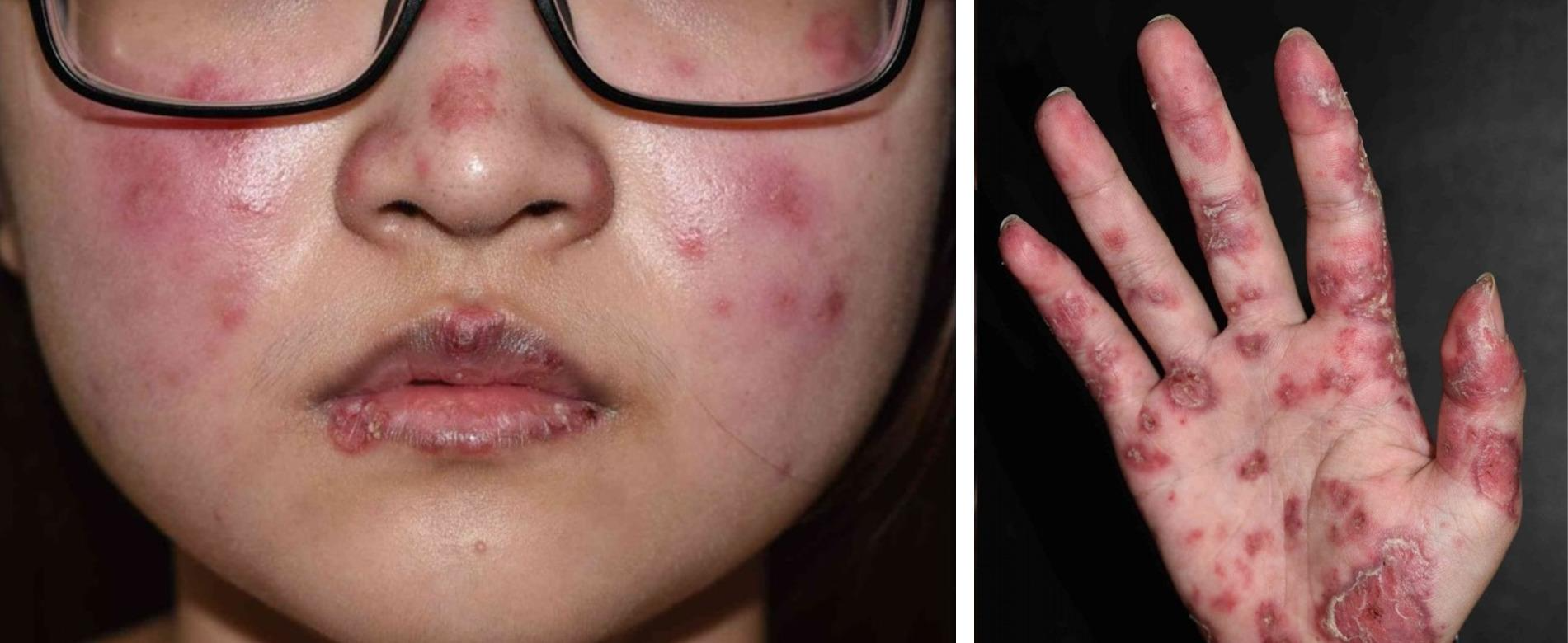(BMJ)—This patient presented with a 2-day hx of fever, headache, and new lesions on the hands, neck, and face. She had a background of systemic lupus erythematosus (SLE), for which she had been taking corticosteroids, azathioprine, and hydroxychloroquine for 2 years but was taking no other meds. Exam: erythematous, annular, target-like papuloplaques on the hands, face, and neck with lip ulcers. Serological tests for mycoplasma, HSV, cytomegalovirus, and EBV were negative. What’s the dx?

|
Rowell syndrome
|
|
erythema multiforme
|
|
toxic epidermal necrolysis
|
|
Stevens-Johnson syndrome
|
